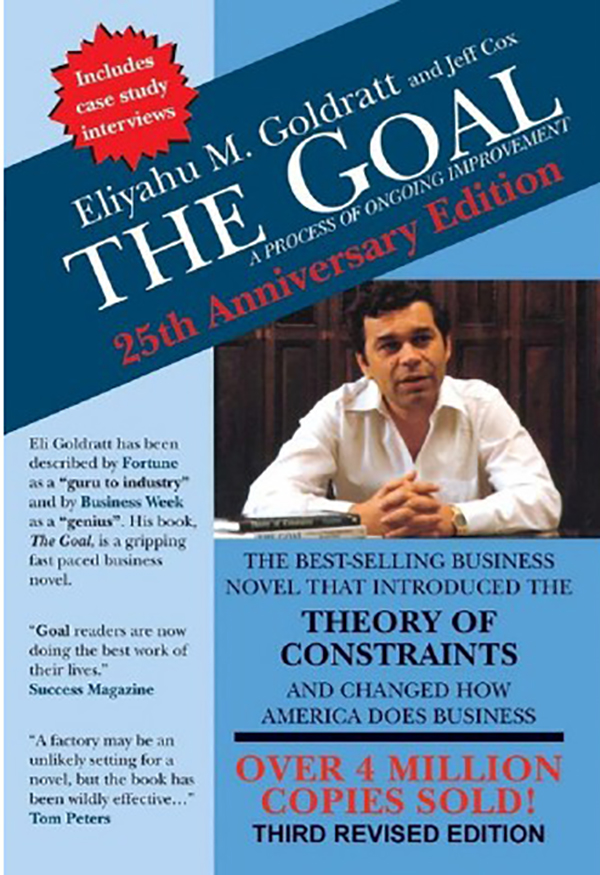The Book in Three Sentences
Doing work and making money are not the same thing. Simplify your problem to the point where you understand the true goal of your organization. With your goal in mind, identify the constraints within your system (i.e. bottlenecks) and focus on improving the output of that constraint without worrying about the productivity of all related processes.
The Goal summary
This is my book summary of The Goal by Eliyahu Goldratt. My notes are informal and often contain quotes from the book as well as my own thoughts. This summary also includes key lessons and important passages from the book.
- Scientific ideas can never be proven. They can only be disproven.
- Scientific theories are not “truth” themselves, they simply explain a lot of natural processes.
- To learn, we should not just give people results to memorize, but stories and plots that allow us to deduce the answers.
- “Whenever we think we have final answers, progress, science, and understanding of our world ceases.”
- Doing work and making money are not the same thing. Not all work leads to making money. Much of it is wasted.
- “Just about everyone is working all the time, but we’re not making any money.”
- Three metrics that will tell you if the business is doing well: net profit, return on investment, and cash flow. All three should be increasing all the time.
- You can express a goal in different ways. How can you express “make money” in terms that fit your business model?
- Three indicators of a healthy business: Operational expense, inventory, and throughput.
- Three important questions to ask: 1) Did we sell any more products? 2) Did expenses go down? 3) Did inventory go down?
- Most processes are a series of dependent events. In any series of dependent events most people can only go as fast as the people in front of them. Because of this, your throughput is only the output of the final person / step in the process.
- Put the fat kid in front. Reverse the order so that the processes go from slow to fast.
- You have to optimize the whole system, not just a local process.
- There is always a bottleneck in every process. You have to manage the process based on the bottleneck.
- The area with the biggest amount of inventory is usually a sign of a bottleneck.
- Make sure the bottleneck only works on good parts by performing quality control before parts go into the bottleneck. You can’t afford to waste time within the bottleneck.
- Most people are so focused on technical details that they can’t see the bigger picture. Don’t bother “checking the numbers” instead “check your assumptions.
- “Making an employee work and profiting from that work are two different things.”
- Rule 1: The capacity of any non-bottleneck process isdeteimed by something else in the system other than its own capacity.
- Rule 2: Activating a resource and utilizing are source aren’t synonymous.
- A system with local maximums is not an efficient system. You should not try to maximize the productivity of every moment because it’s not an optimally designed system.
- The goal is not to reduce cost, but to increase throughput. This has huge implications because nearly everyone is focused on reducing costs.
- The Theory of Constraints: Step one: identify the systems constraints. Step two: decide how to exploit the constraints. Step three: subordinate all other processes to the above decisions. Step four: elevate and improve the systems constraints. Step five: if in a previous step a constraint has broken, return to step one.
